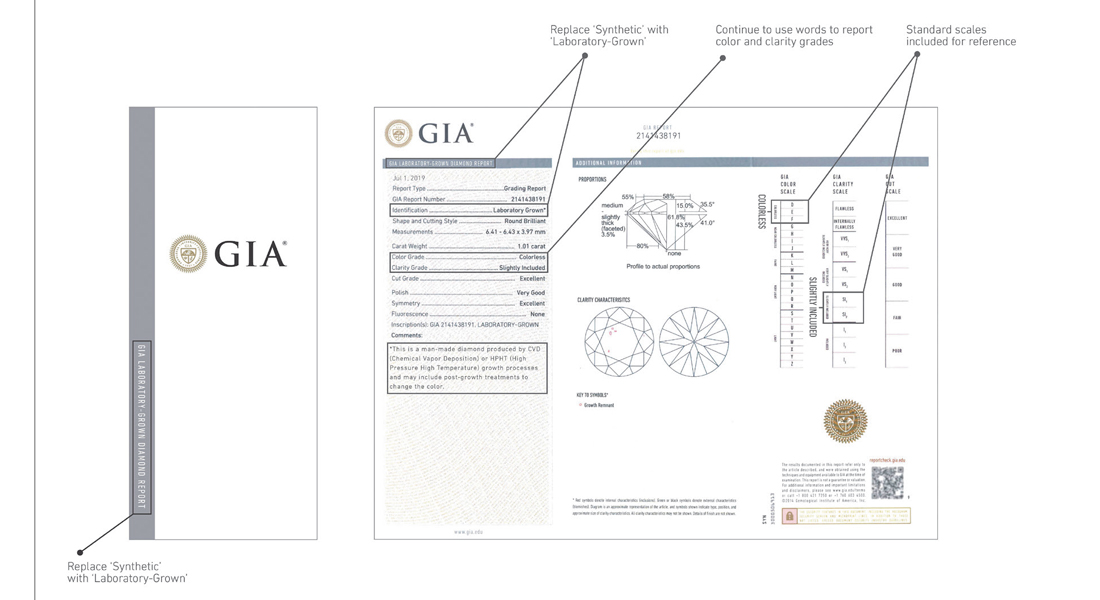NIRUPA BHATT, managing director of GIA India and Middle East, speaks to SOLITAIRE about the recent changes in terminology for GIA’s laboratory-grown diamond reports.
Why did GIA feel the need to change its diamond grading report for lab-grown diamonds?
In 2007, GIA began offering the GIA Synthetic Diamond Grading Report. On March 29th this year, GIA announced that the name of the report would change to GIA Laboratory-Grown Diamond Report, replacing ‘synthetic’ with ‘laboratory-grown.’ A statement will be added that laboratory-grown diamonds may be colour treated.
GIA used ‘synthetic,’ as well as ‘laboratory-grown’ and ‘manmade,’ in the reports because those were the terms approved by the US Federal Trade Commission (FTC) to describe man-made diamonds. The FTC changed the guidelines for approved terminology in July 2018, and GIA is following those guidelines.
The mission of the FTC is to protect consumers. GIA has worked with the FTC for many decades, both providing technical input and also following the guidelines.
Do you expect the terminology changes to have any negative impact on the volumes of labgrown diamonds being submitted for grading?
As a mission-driven, public benefit institute, GIA believes in the absolute importance of disclosure. That’s why the GIA LaboratoryGrown Diamond Report will include this statement – “This is a man-made diamond produced by CVD (Chemical Vapor Deposition) or HPHT (High Pressure High Temperature) growth processes and may include post-growth treatments to change the color.”
GIA’s role is to provide accurate and unbiased analysis of stones submitted. It is for consumers to decide what they would like to buy.
Tell us about the separate grading scale (for colour and clarity) for lab-grown and natural diamonds.
GIA has always used different terminology to report the colour and clarity grades for laboratory-grown diamonds: Colorless, Near Colorless, Faint, Very Light and Light to report colour grades on laboratory-grown diamonds, not D-Z; and Flawless, Internally Flawless, Very Very Slightly Included, Very Slightly Included, Slightly Included and Included to report clarity for laboratory-grown diamonds.
The approach for grading natural and laboratory-grown diamonds is the same, but with broader nomenclature for laboratorygrown diamonds.
On the new reports, to avoid confusion, laboratory-grown colour grades (Colorless, Near Colorless, etc.) will be listed alongside the D-Z scale so consumers can see, for example, that a Near-Colorless laboratory-grown diamond is in the range G to J colour grade of a natural diamond.
In the interest of strengthening the demarcation of the two diamond pipelines – natural and lab-grown – is the GIA working with other major gemmological labs to standardise the terminology used across the industry?
GIA established the International Diamond Grading System, based on the 4Cs (Colour, Cut, Clarity and Carat Weight), a standardised way of evaluating diamonds.
This is now the globally accepted standard for diamond quality.
As a part of our mission to ensure public trust in gems and jewellery, GIA is continuously investing in research to identify new gem materials coming into the market. As a result of decades of gemmological research, GIA has been developing instruments and services to identify and screen undisclosed laboratory-grown diamonds to help give the trade and consumers confidence in their purchase.
In India and the Middle East, GIA is working with the trade body associations at the national, regional and local levels to spread awareness about laboratory-grown diamonds regarding detection and disclosure, and sharing knowledge on segregating and maintaining two separate pipelines for natural and laboratory-grown diamonds.


